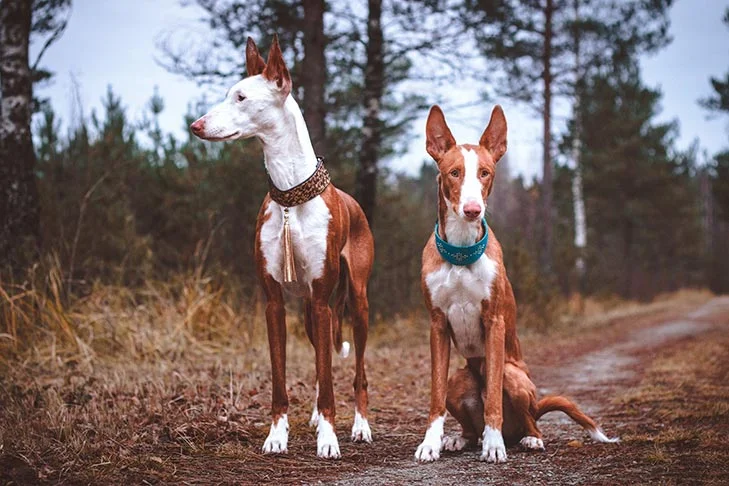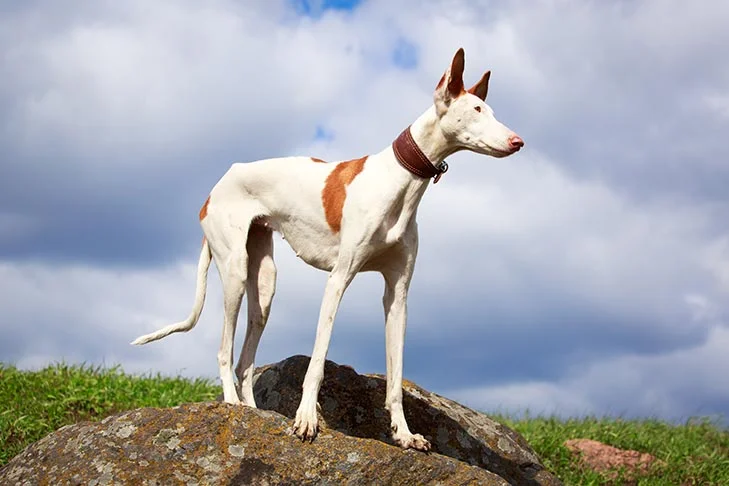The Ibizan Hound was developed as a rabbit courser on the rocky coastlines of Spain’s Balearic Islands, and it is a slim and leggy visitor from the dawn of civilization. Ibizans are world-class sprinters and leapers who require lots of room to blow out their motors.
Ibizans are visitors from the dawn of civilization who are slender and lithe. Students of art history will be familiar with the long, erect ears and extended head motif from ancient Egypt. The sexy, exquisite body measures 22.5 to 27.5 inches at the shoulder, and its coat is either all-red or all-white, or it may be decorated with red and white patterns. The amber or caramel eyes, coupled with the rosy-colored leathers of the nose, eye rims, and lips, perfectly match the coat. It’s common to compare the breed’s gentle grace to that of a deer.






 Health
Health Grooming
Grooming Exercise
Exercise Training
Training Nutrition
Nutrition